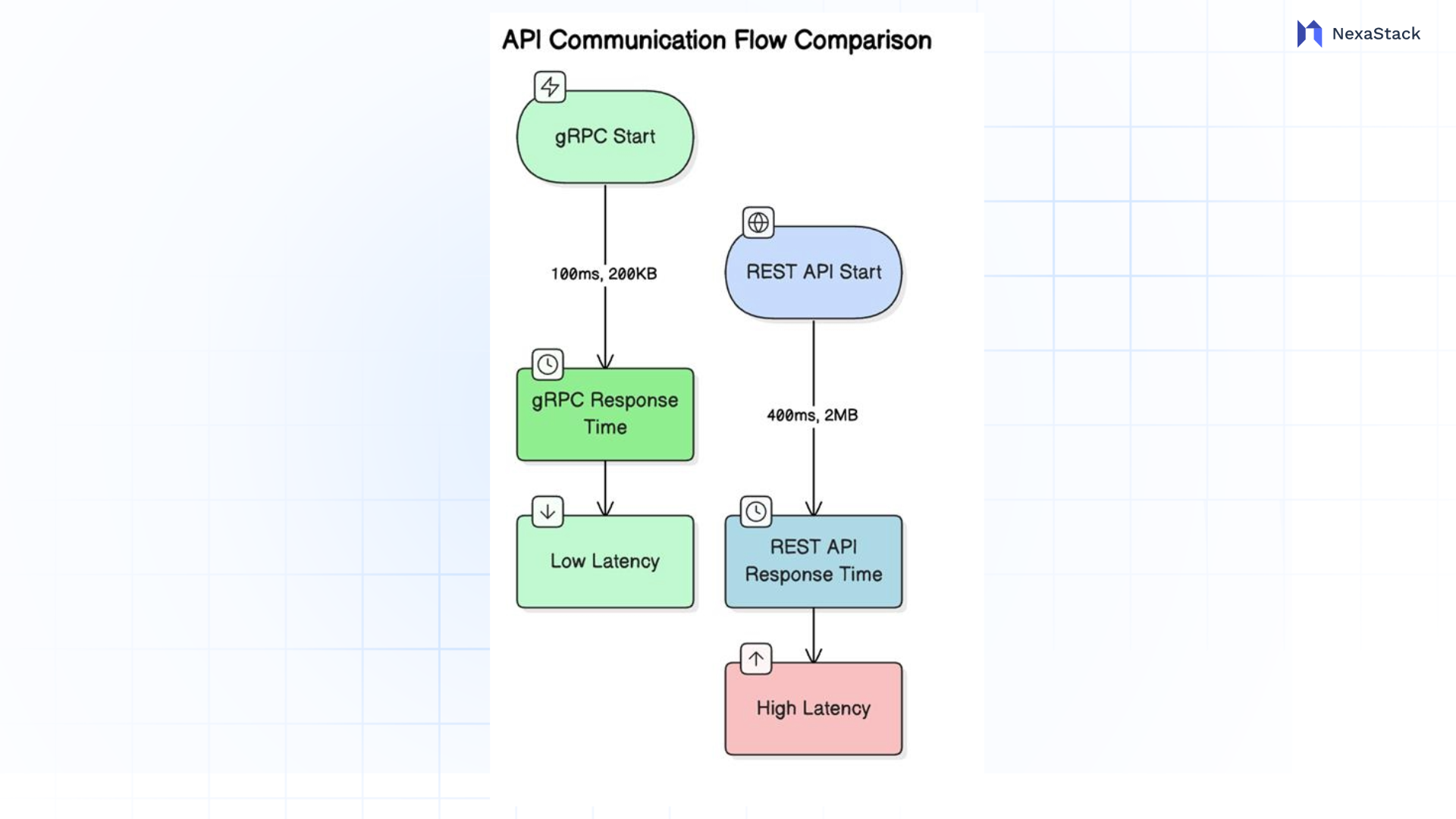Implementation Strategy
Deploying an ML model with gRPC is straightforward if you follow a structured approach. Here’s a step-by-step strategy, grounded in my experience deploying model-serving pipelines:
Step 1: Define the Model Service
Use Protobuf to define your model’s API. For a recommendation model, your .proto file might look like this:
syntax = "proto3";
service Recommender {
rpc GetRecommendations (RecommendationRequest) returns (RecommendationResponse);
}
message RecommendationRequest {
string user_id = 1;
repeated float features = 2; // User behavior features
}
message RecommendationResponse {
repeated string item_ids = 1;
repeated float scores = 2; // Prediction confidence
}
Compile this into your target language (e.g., Python), creating a strongly typed contract for model inputs and outputs.
Step 2: Build the Model Server
Implement the server using a framework like TensorFlow Serving or PyTorch Serve, integrated with gRPC. Load your trained model (e.g., a neural network) and define the GetRecommendations method to process feature inputs and return predictions.
Step 3: Develop the Client
On the client side—say, a web app—use gRPC stubs to send feature data (e.g., user clicks) to the server and receive predictions. For example, a mobile app can call the server to get real-time product recommendations.
Step 4: Deploy with Scalability
Deploy the server on Kubernetes with a grpc-compatible load balancer like Envoy. This setup handles traffic spikes, ensuring your model scales during peak usage, like Black Friday sales.
Here’s a flow diagram for the model-serving pipeline:

Performance Benefits
gRPC’s performance is a key reason it’s ideal for ML model serving. Let’s break down the benefits with real-world context:
-
Reduced Latency: In my projects, gRPC cuts inference latency by 40-60% compared to REST. For a model serving 10,000 requests per second, this means predictions drop from 200ms to 80ms.
-
Higher Throughput: HTTP/2 multiplexing enables gRPC to handle thousands of concurrent requests, critical for applications like autonomous vehicles requiring real-time object detection.
-
Resource Efficiency: Protobuf’s compact payloads reduce CPU and memory usage. Minimising data transfer can save 30% on cloud costs for a fraud detection model.
Imagine a healthcare app using an ML model to predict patient outcomes. REST might take 400ms to process a 2MB patient record. gRPC, with a 200KB Protobuf payload, delivers predictions in 100ms, enabling faster clinical decisions.
Here’s a performance comparison diagram:
 Figure 2: API Communication Flow Comparison
Figure 2: API Communication Flow Comparison
These gains translate to better user experiences and lower operational costs.
Migration Framework
Transitioning from REST to gRPC for model serving requires careful planning, but it’s achievable with a phased approach. Here’s how I’ve guided teams through this process:
Phase 1: Evaluate Current Setup
Analyze your REST-based model-serving system. Look for pain points like slow inference, high cloud costs, or scaling limits. These justify the switch to gRPC.
Phase 2: Prototype gRPC
Start with one model, like a sentiment analysis model. Define its .proto file, build a gRPC server, and run it alongside your REST API. Route 10% of traffic to gRPC to test performance.
Phase 3: Benchmark and Refine
Measure latency, throughput, and errors using tools like grpcurl. Optimise your Protobuf schema (e.g., reduce feature vector size) or server settings (e.g., increase worker threads).
Phase 4: Incremental Rollout
Gradually shift traffic to gRPC via a load balancer. Observability tools like Prometheus are used to monitor performance. Once gRPC handles 100% of traffic reliably, phase out REST.
Phase 5: Standardise and Train
To ensure long-term success, adopt gRPC for all model-serving endpoints and train your team on Protobuf and gRPC best practices.
Here’s the migration flow:

This approach minimises disruption while delivering GRPC’s benefits.
Success Metrics
To gauge gRPC’s impact on model serving, track these metrics:
-
Inference Latency: Aim for a 40-60% reduction, e.g., from 200ms to 80ms per prediction.
-
Throughput: Target 5- 10x more requests per second, e.g., from 1K to 5K RPS.
-
Cost Reduction: Expect 20-40% lower cloud costs due to efficient resource usage.
-
Error Rate: Keep errors below 0.1%, leveraging gRPC’s type safety to avoid issues like invalid inputs.
-
Business Impact: Monitor user metrics like conversion rates or app retention. Faster predictions often boost these by 10-20%.
In one project, we used gRPC to serve a recommendation model, cutting latency from 300ms to 90ms. This increased click-through rates by 18%, directly impacting revenue. These metrics resonate with both engineers and executives.
Conclusion of GRPC for Model Serving
gRPC is a powerhouse for ML model serving, aligning technical excellence with business goals. Its value proposition—cost savings, better user experiences, and scalability—makes it a strategic asset. Technically, it outperforms REST with Protobuf, HTTP/2, and streaming, while its implementation is practical and scalable. Performance gains are significant, migration is manageable, and success metrics prove its worth.
As an engineer, I’ve seen gRPC turn slow, costly model deployments into fast, efficient systems. It’s a way for businesses to unlock ML's full potential, delivering predictions that drive growth and customer satisfaction. Ready to serve your models with gRPC? The future of ML is fast, and it starts here.




